One of the common health conditions that people develop is skin disease. People can develop such ailments due to various factors and exacerbate them when not treated immediately. Worst-case scenarios can occur like severe pain, discomfort, and even life-threatening situations.
With such promiscuity, patients should be aware of the different types of skin disease. Understanding how they occur and the available treatment options can be the patients’ guide towards better skin health. In this blog, we’ll let you in on these crucial details. So, let’s begin!
Understanding Skin Diseases
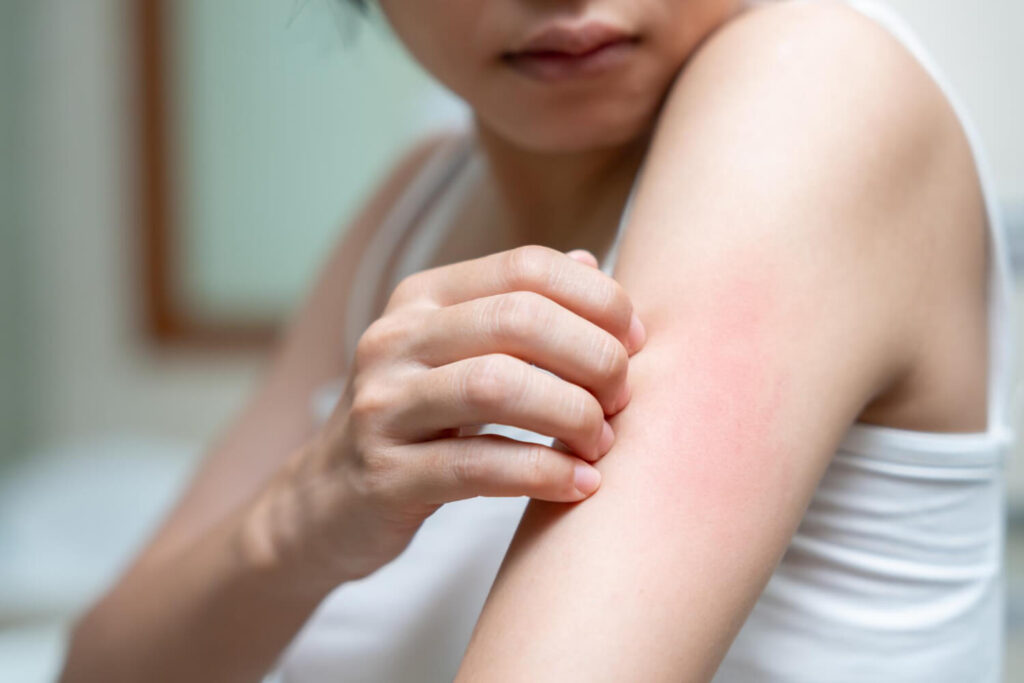
Our skin is the largest organ in the body, acting as a protective barrier against external factors. It not only shields us from harmful UV rays and pathogens but also helps regulate our body temperature and maintain moisture levels. Skin diseases, also known as dermatological disorders, manifest as abnormal conditions affecting the skin, hair, nails, or mucous membranes.
When it comes to skin diseases, it’s important to understand that they can range from mild and temporary to chronic and life-altering. Some conditions may cause discomfort and aesthetic concerns, while others can have a significant impact on a person’s overall well-being and quality of life. Therefore, early diagnosis and appropriate treatment are crucial in managing skin problems effectively.
How Skin Diseases Develop
One crucial aspect of skin disease development is the role of the skin microbiome. The skin is home to a diverse community of microorganisms vital for maintaining skin health. Disruption of this delicate balance can contribute to the development of various skin conditions, highlighting the intricate interplay between the skin’s microbiota and disease pathogenesis.
Aside from that, certain factors also contribute to skin disease development. However, not all patients have common triggering factors for developing the condition. So, it’s best to monitor one’s condition, especially when it starts to easily identify the factor that led to the development of your skin disease.
Causes of Skin Disease
Genetics in Skin Diseases
In terms of skin disease development, one of the common reasons why people have them is due to genetics. If any of your relatives have been diagnosed with a skin disease, chances are, they have the disease too. Some of the common skin diseases that can be passed on is eczema.
Environmental Factors Contributing to Skin Diseases
On the other hand, people can also develop skin diseases due to environmental factors. Such triggers can be allergens like dust mites, pet dander, etc. which can contribute to condition occurrence. Aside from that, some factors like ultraviolet radiation or UV, pollutants, and other chemicals can also contribute to skin disease development. Protecting the skin from these harmful elements is vital for disease prevention.
Common Types of Skin Diseases
Eczema
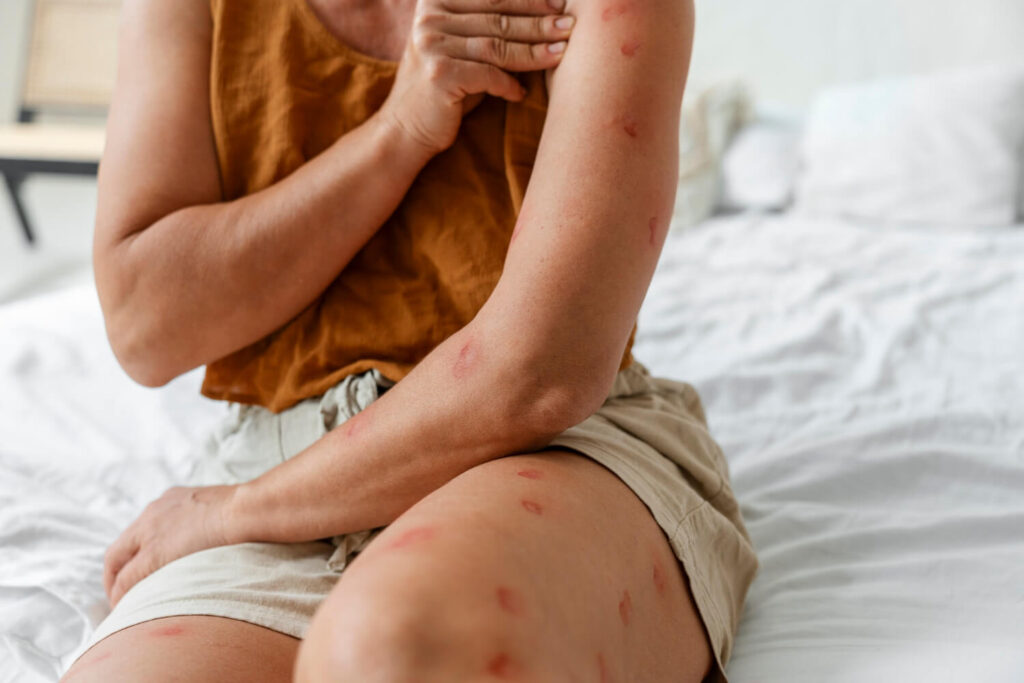
Eczema or atopic dermatitis is a chronic inflammatory skin condition characterized by dry, itchy patches. Patients with eczema may also develop skin rashes on a swollen area of the body. Furthermore, the patches can be itchy, and turn into raw skin when scratched. Individuals with a family history of allergies or asthma can be prone to eczema as it can be triggered by environmental factors such as irritants or allergens.
Psoriasis
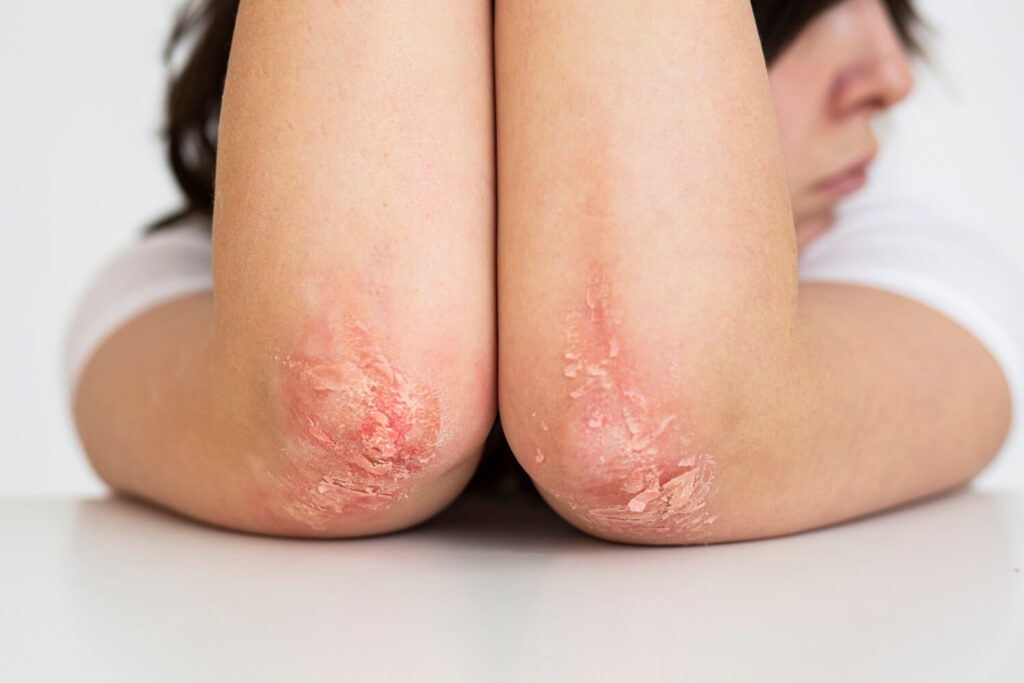
Meanwhile, psoriasis is a skin disease that can affect the immune system. It is an autoimmune disease that causes rapid skin cell growth, resulting in red, dry skin and scaly patches in the affected area. Psoriasis can affect various parts of the body, including the scalp, elbows, knees, and nails. Furthermore, this chronic condition has periods of flare-ups and remission, which can occur for weeks or months. That’s why it can be a challenging skin disease to deal with as it can flare up for a long time.
Acne
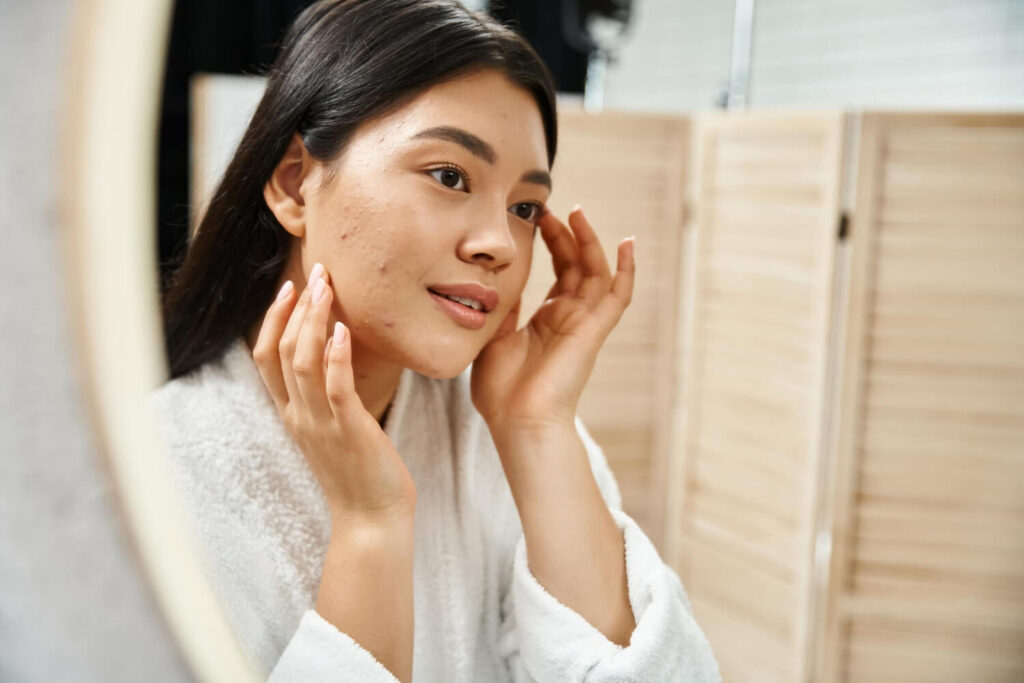
Another common skin condition that most people experience is acne. Acne develops due to clogging of hair follicles, dead skin cells, and sebaceous glands. Some areas of the skin may present whiteheads and blackheads, which means the pores are clogged by dirt. Other times, it can progress into pimples, which can be painful. It’s best to not pop the pimples to prevent an allergic reaction or inflammation. Consult a doctor for effective topical medicines to avoid such mishaps.
Rosacea
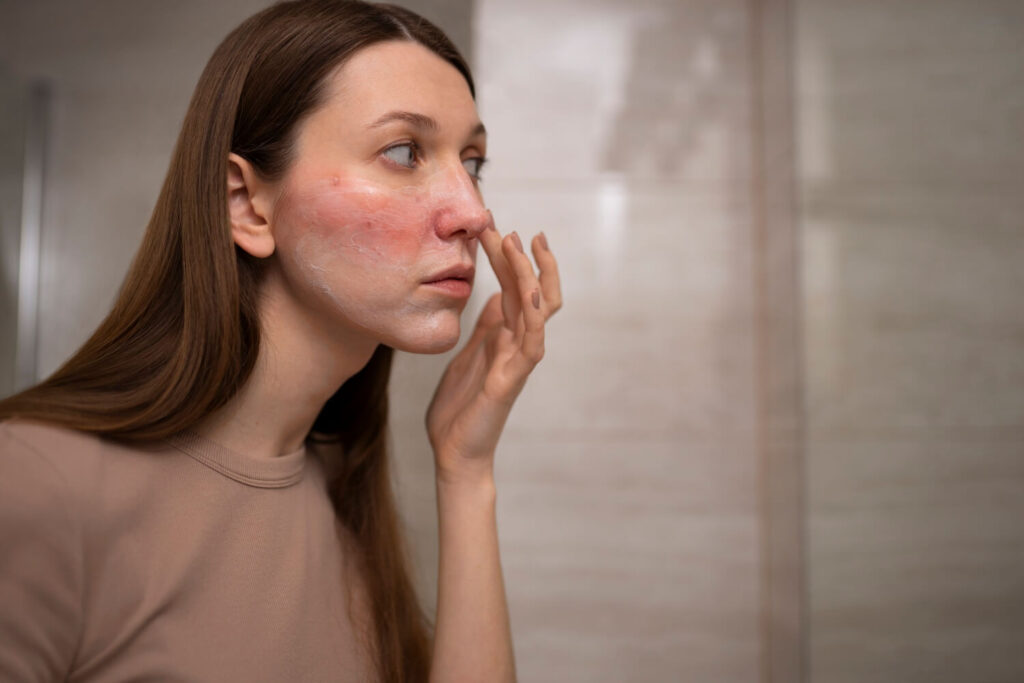
Aside from that, there is also a known skin disease that can affect the skin color. This chronic skin condition known as rosacea, causes facial redness, flushing, and the appearance of small blood vessels. It often affects individuals with fair skin and can be triggered by factors such as sunlight, certain foods, alcohol, or stress. Rosacea can lead to feelings of self-consciousness and may require a tailored treatment plan.
This skin sensitivity can be an asset for some, but most people feel the negative side of the condition. Various triggers are always present, which means rosacea occurs frequently.
Fungal Skin Infections
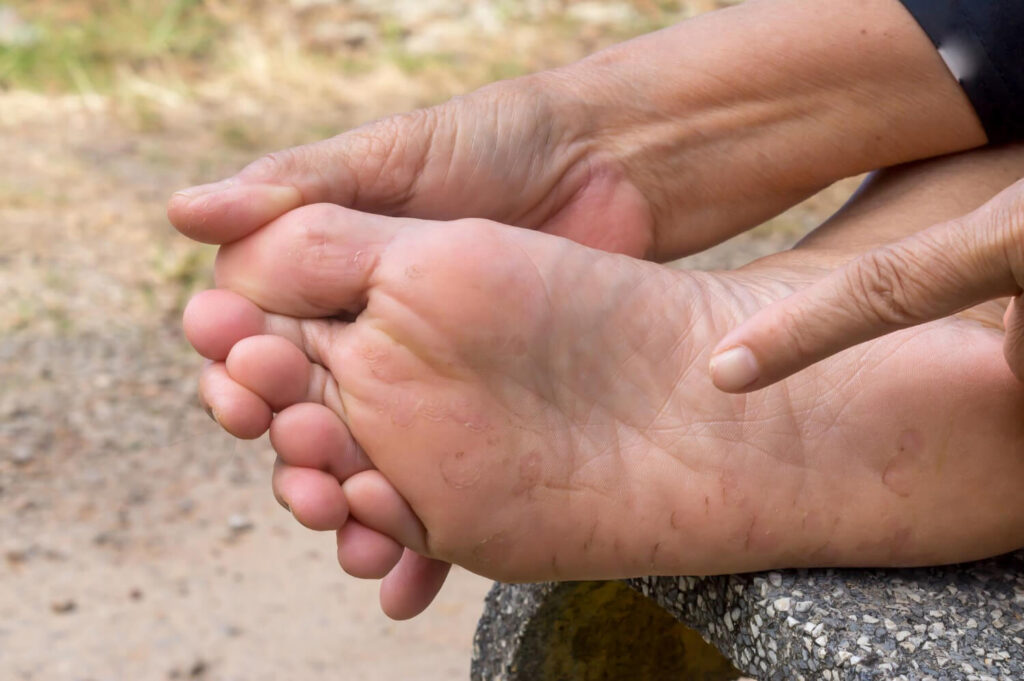
On the other hand, fungal skin infection or mycosis is a skin disease caused by fungi. Common forms of fungal infection are athlete’s foot and ringworm. These infections thrive in warm and moist environments, making them common in areas like the feet, groin, or armpits. Signs of infection may involve scaly skin, redness, etc. Fungal infections are usually treated with antifungal medications and proper hygiene practices.
Cold Sores
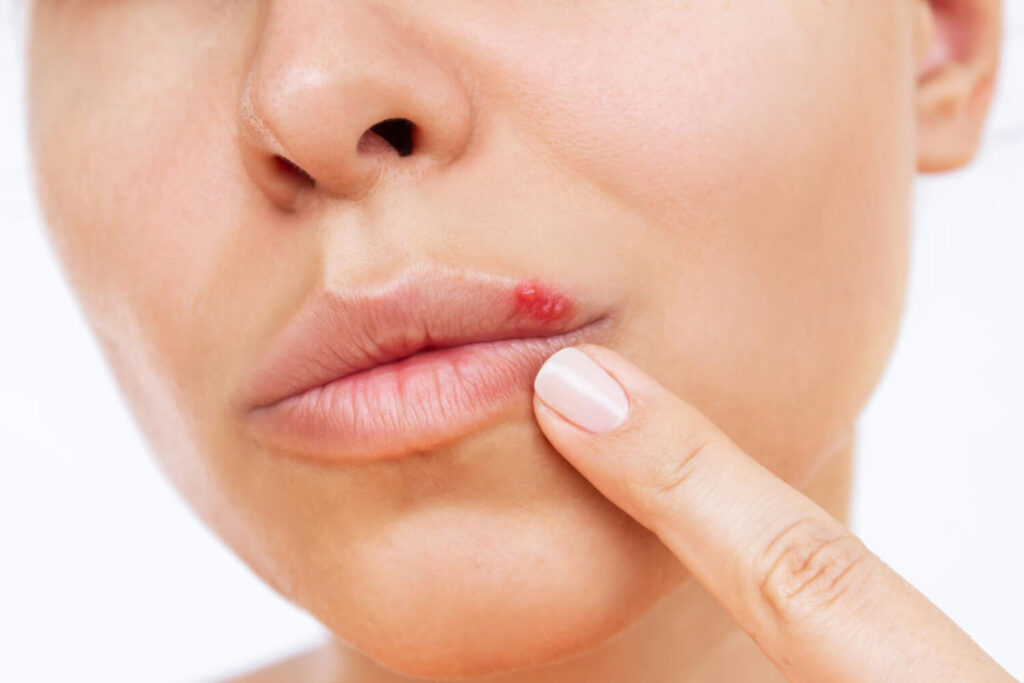
Additionally, another skin disease that individuals can develop is a cold sore. This skin illness commonly occurs once infected with herpes simplex virus. Cold sores appear around the lips, which consist of blisters filled with fluid. The blisters will heal around 2- 3 weeks.
Skin Cancer
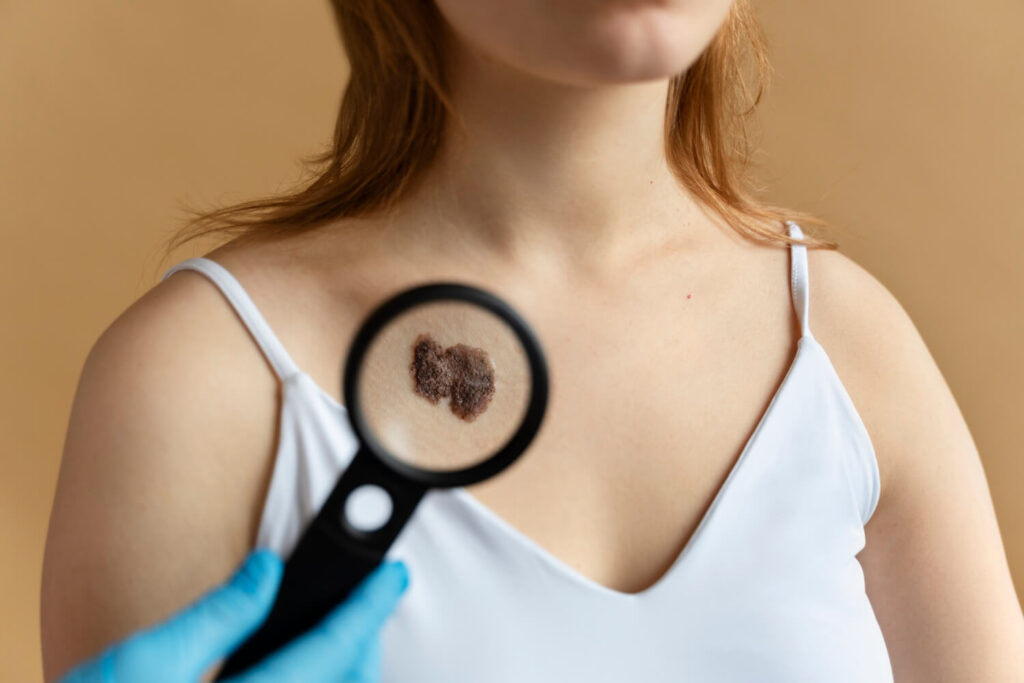
Lastly, individuals can also be susceptible to skin cancer, especially if they don’t wear protection against UV rays. However, that doesn’t mean it can only form on exposed areas of the skin. Remember that skin cancer can also form on fingernails, palms, and soles.
There are different types of skin cancer:
- squamous cell carcinoma
- basal cell carcinoma
- melanoma
Importance of Regular Skin Checks
Monitoring one’s condition is vital, especially if you have developed a skin disease. Doing so will help with timely intervention and treatment. However, before anything else, an accurate diagnosis must first occur, which a skin examination can provide.
Your skin health status can be verified by the doctor through undergoing diagnostic tests like dermoscopy and skin punch biopsy. So, if you think the changes in your skin can be a sign of a skin disease, it’s best to visit a health expert promptly.
Lifestyle Changes for Preventing Skin Diseases
Prevention is as important as treatment when it comes to skin diseases. Certain lifestyle changes can significantly reduce the risk of developing various skin conditions.
Here are some preventive measures to consider:
- Practicing good hygiene by regularly cleansing the skin and using gentle, non-irritating products.
- Maintaining a healthy diet rich in vitamins, minerals, and antioxidants to support skin health.
- Protecting the skin from harmful UV rays by wearing sunscreen and appropriate clothing.
- Managing stress levels, as stress can worsen certain skin conditions.
- Wear protective clothing, such as gloves or long sleeves, when working with chemicals or irritants.
- Avoid prolonged exposure to hot water or extreme temperatures, as they can damage the skin.
- Steering clear from allergens that can trigger flare-ups.
Treatment Options for Skin Diseases
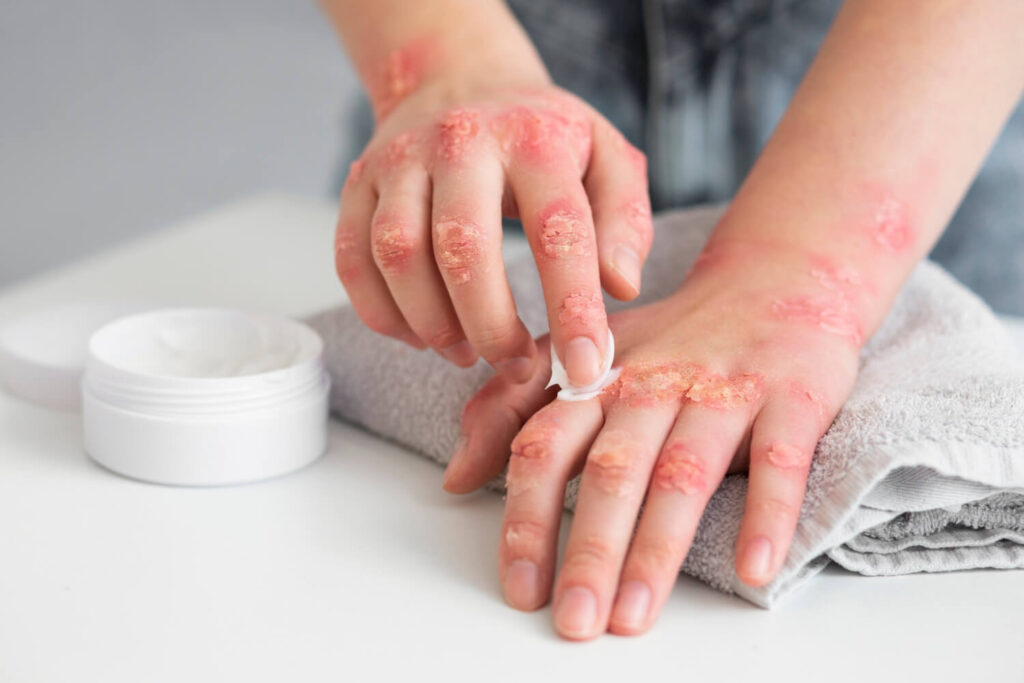
Over-the-Counter Treatments for Skin Diseases
For mild or occasional skin diseases, over-the-counter treatments can often provide relief. These may include topical creams, ointments, lotions, or antifungal medications. However, it is important to consult a healthcare professional before using these products, as incorrect usage or inappropriate treatment can worsen the condition.
Prescription Treatments for Skin Diseases
Prescription medications may be necessary to manage and treat skin diseases effectively. Dermatologists can prescribe topical medications, oral medications, or injections based on the specific condition and its severity. It is crucial to follow the prescribed treatment plan and attend regular follow-up appointments to monitor progress.
Surgical and Non-Surgical Procedures for Skin Diseases
For certain skin diseases, surgical or non-surgical procedures may be considered. These interventions can range from minor procedures, such as excisions or biopsies, to more complex surgeries, including skin grafts or laser treatments. Dermatologists or plastic surgeons will determine the most suitable approach based on individual circumstances.
Final Takeaway
Skin diseases encompass a range of conditions that can significantly impact a person’s quality of life. Understanding the different types and how to prevent them is crucial for effective skin management. It can be a challenging path, but when it comes to skin diseases, early recognition and intervention are important.
So, if you think you might be suffering from any of the mentioned skin diseases, it is time to meet with an expert for assessment and treatment. Book an online consultation with a dermatologist today!



